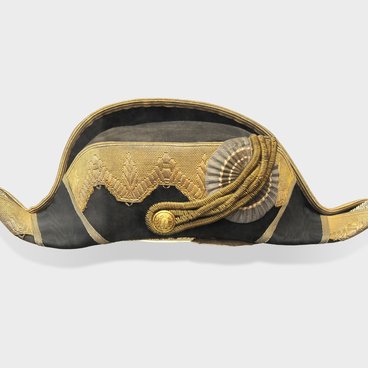The Ulyanovsk Regional Museum of Local Lore named after Ivan Goncharov presents the pickelhaube, a spiked leather helmet worn in the 19th and 20th centuries by members of the German armed forces, firefighters and police officers. This headdress is often associated with Prussian and German armies.
The base of the pickelhaube of hardened (boiled) leather, given a glossy-black finish, and reinforced with metal trim that included a metal spike at the crown. Early versions had a high crown, but the height was gradually reduced, and the helmet became more fitted in form. The central part of the helmet plate — the cockade — shows a large Prussian eagle from the coat of arms of Prussia.
The pickelhaube was introduced into the Prussian army in 1842 by order of King Frederick William IV. For a long time, it was believed that pickelhaube was a purely Prussian invention. But few people know that in 1837, during a friendly visit of Prince Charles of Prussia to Russia, Nicholas I presented the guest with a prototype of the future “helmet of the 1844 model”, and Charles liked it so much that upon returning to his homeland, he asked his father Friedrich Wilhelm III to consider dressing the Prussian army in “Russian helmets”. However, the practical king of Prussia flatly refused to carry out an unnecessary and, in his opinion, expensive reform. Nevertheless, after the death of Wilhelm III in 1840, his eldest son Friedrich Wilhelm IV came to power and introduced a slightly modified “Russian-style helmet” into the Prussian army in 1842 — before it appeared in the Russian army.
Even though it looked spectacular at parades and had good protection qualities, the helmet turned out to be extremely impractical in combat. During the First World War, it was discovered that the pickelhaube did not meet the requirements of trench warfare. Leather helmets provided virtually no protection against shells and shrapnel. In addition, the spike would often peek out from the trench, betraying the location of the helmet’s wearer, and sometimes enemy soldiers would purposefully shoot the spike off to intimidate the Germans. This might have been the reason why a version of the helmet with a removable spike was introduced in 1915. From 1916, the pickelhaube was gradually replaced by the new German steel helmet. With the collapse of the German Empire in 1918, the pickelhaube ceased to be part of the military uniform.


